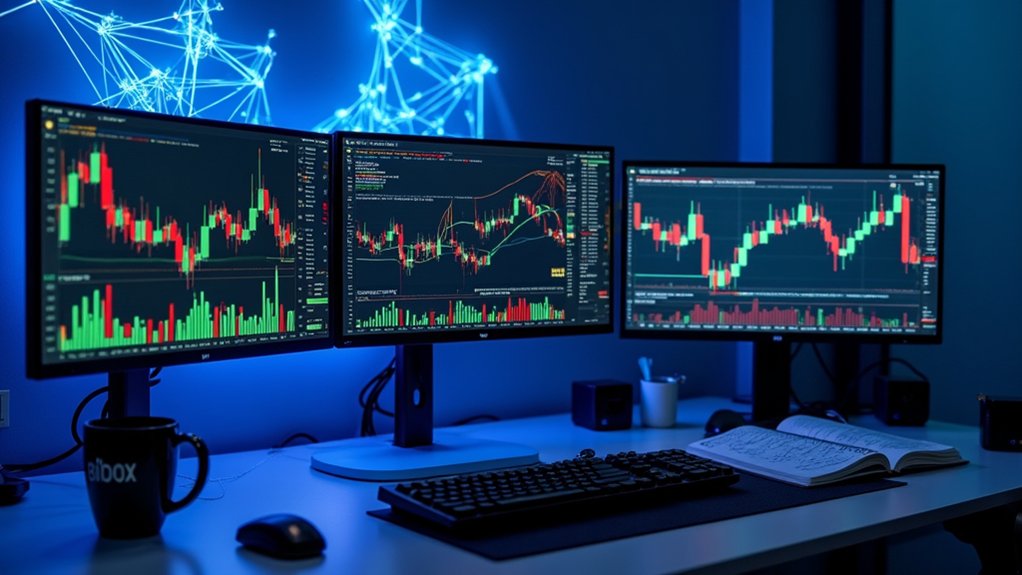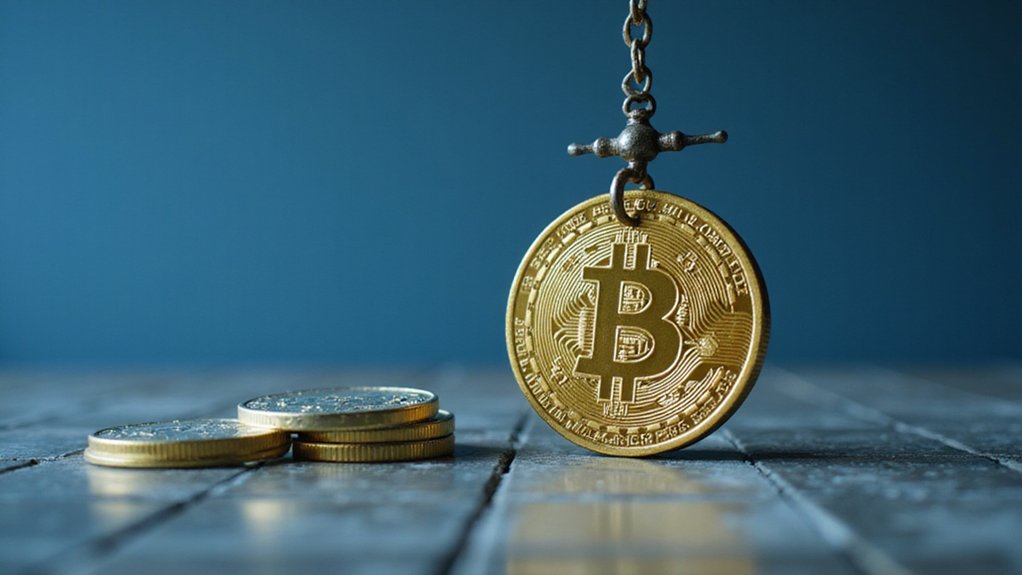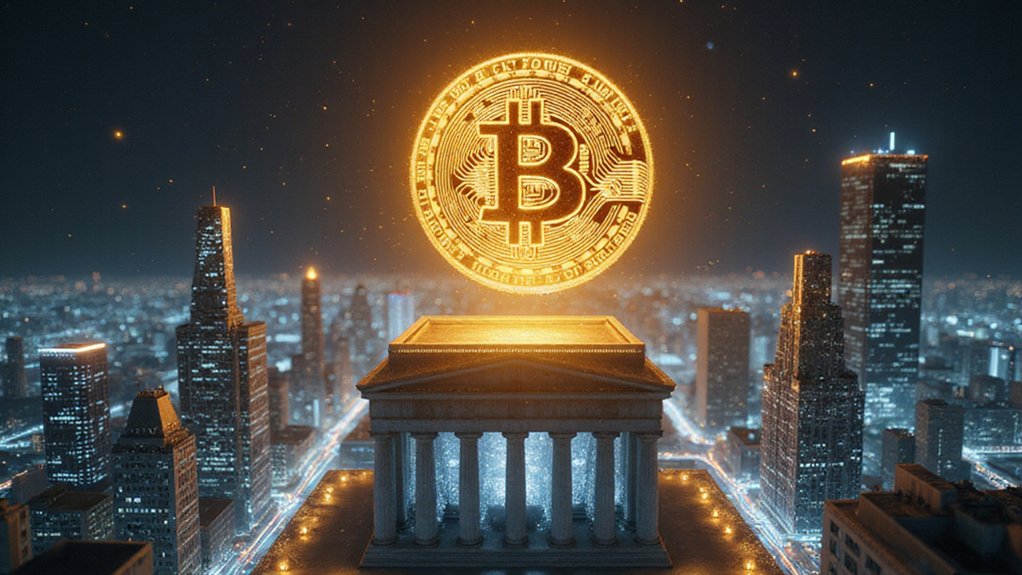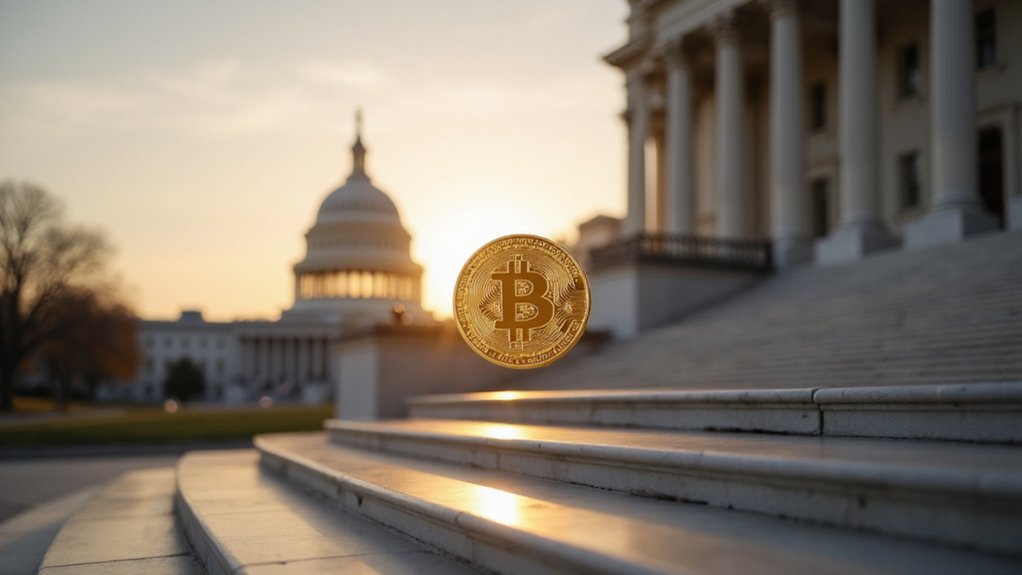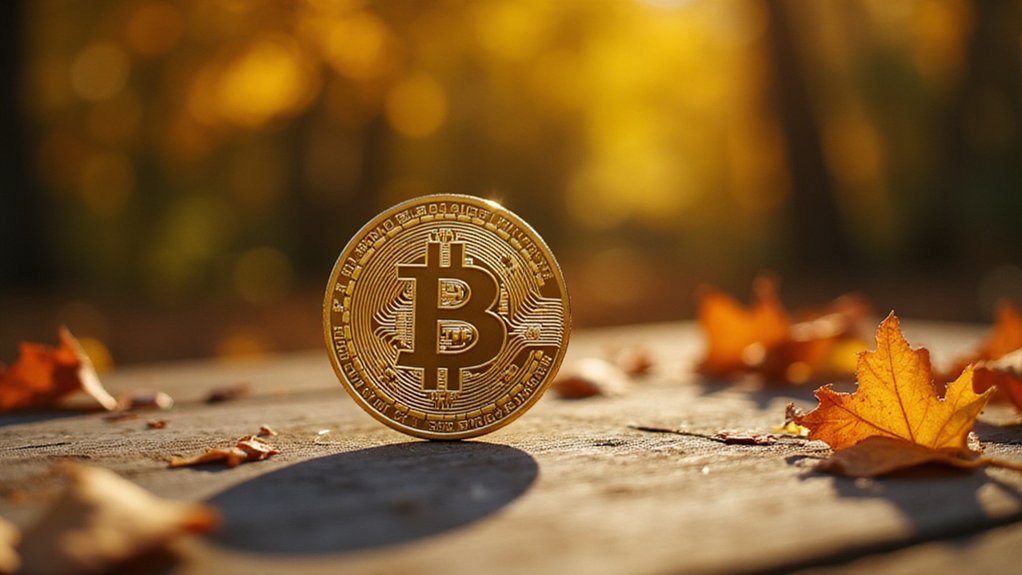Bibox Exchange, launched in 2017 by Chinese blockchain luminaries, processes $200-400 million daily while offering AI-enhanced trading capabilities that distinguish it from competitors. The platform supports 200+ trading pairs with leverage options up to 150X for futures, maintaining competitive fees (0.20% taker/0.075% maker) with discounts for BIX holders. Security protocols include cold storage for 95% of funds and AI-driven token management—attributes that intermediate traders seeking sophisticated tools without overwhelming complexity might find surprisingly appealing.
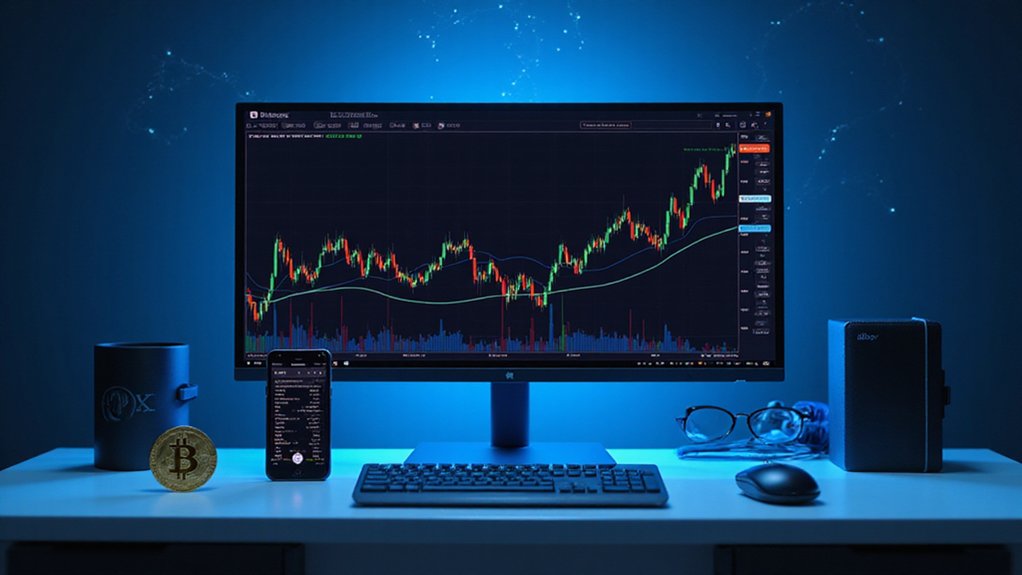
The cryptocurrency landscape, with its ever-evolving infrastructure of trading platforms, presents a curious paradox: complexity masquerading as accessibility.
Among this pantheon of digital asset exchanges stands Bibox, launched in November 2017 by Chinese blockchain luminaries and now operating across three continents.
This mid-tier exchange—processing a not insignificant $200-400 million in daily volume—distinguishes itself through AI-enhanced algorithmic trading capabilities that purportedly optimize the trading experience.
With AI-driven algorithms at its core, Bibox navigates the crypto waters at $200-400M daily—a technological sextant for the digital asset voyager.
Bibox’s offering encompasses over 90 premium tokens and more than 200 trading pairs, catering to both conservative and ambitious traders through spot and futures markets.
The platform permits leverage trading up to a rather eyebrow-raising 150X for futures (one wonders about the risk management conversations that established this threshold) and a more measured 10X for margin trading.
Their fee structure—0.20% for takers and 0.075% for makers—positions them competitively among peer exchanges, with additional discounts of up to 25% available to holders of their native BIX token. Unlike MEXC Exchange which offers low transaction fees as low as 0.0% for both spot and futures trading, Bibox maintains slightly higher rates.
The exchange’s security infrastructure employs microservices architecture and AI for token management—technical jargon that fundamentally translates to “we’ve taken reasonable precautions with your digital assets.” Most notably, Bibox maintains 95% of funds in cold storage, significantly reducing the risk of large-scale security breaches.
Users benefit from instant deposits and withdrawals, multilingual 24/7 support, and access to various fiat on-ramps for purchasing cryptocurrencies.
Perhaps most intriguing are Bibox’s AI-powered trading tools, including grid trading bots for both spot and futures markets and copy trading functionality that allows neophytes to mirror the strategies of more experienced traders.
These automated systems operate without additional fees—a welcome departure from the nickel-and-dime approach prevalent in traditional finance.
For traders seeking a balance between sophisticated tooling and manageable complexity, Bibox presents a compelling option in the cryptocurrency exchange ecosystem.
Its blend of AI capabilities, diverse trading options, and reasonable fee structure makes it particularly suitable for intermediate traders looking to expand beyond basic spot trading without drowning in excessive complexity.
Frequently Asked Questions
What Are Bibox’s Withdrawal Fees Compared to Other Exchanges?
Bibox structures withdrawal fees around network transaction costs rather than adding proprietary markups—a impressively transparent approach in an industry known for fee obfuscation.
Unlike GDAX’s percentage-based model (often resulting in higher costs), Bibox simply passes along the network fees to users.
Swapzone similarly charges only gas fees.
These dynamic network-based charges typically position Bibox competitively against exchanges employing flat or percentage-based fee structures, though actual costs fluctuate with network congestion—a universal crypto tribulation.
How Does Bibox Verify Account Identity for Different Tier Levels?
Bibox employs a multi-tiered verification system, with each level requiring progressively more stringent identity confirmation.
Basic accounts need minimal verification (email/phone), while advancing to higher tiers demands thorough KYC documentation—typically government-issued ID uploads and selfies with handwritten notes.
Premium tiers may necessitate additional documentation or face recognition technology.
The mobile app, notably, processes these verifications more expeditiously than its web counterpart—a curious efficiency gap that nevertheless benefits security-conscious traders seeking elevated withdrawal privileges.
Can I Automate Trades With Bots on Bibox?
Bibox indeed facilitates automated trading through various bot options.
Traders can implement algorithmic strategies—including DCA, Grid, and Martingale approaches—via both native functionalities and external platforms like Tafabot.
These automation tools support spot, futures, and arbitrage markets across 500+ digital assets.
Integration requires secure API key authorization, with feature accessibility varying by subscription tier.
The platform accommodates traders of diverse experience levels with its adaptable interface and offers the obligatory (if somewhat pedestrian) security measures like two-factor authentication.
Does Bibox Offer Staking or Yield Farming Opportunities?
Bibox indeed offers both staking and yield farming opportunities, though with distinct operational models.
Users can stake individual tokens for relatively stable returns while maintaining asset control, or engage in yield farming by providing token pairs to liquidity pools (with correspondingly variable APYs).
The platform’s decentralized nature allows direct management of these profit-generating activities, though—as with all crypto endeavors—participants should remain cognizant of the inherent risks accompanying potentially attractive returns.
What Countries Are Restricted From Using Bibox Services?
Bibox restricts users from several jurisdictions, primarily due to regulatory compliance and international sanctions.
This roster of crypto-personae non gratae includes the United States, mainland China, Taiwan, Hong Kong, and Crimea—the usual suspects in financial restrictions.
Additional territories where traders find themselves locked out include Sudan, Guam, Bangladesh, Bolivia, Ecuador, Kazakhstan, Kyrgyzstan, Cuba, Iran, and North Korea—a veritable United Nations of exclusion in the cryptocurrency space.
